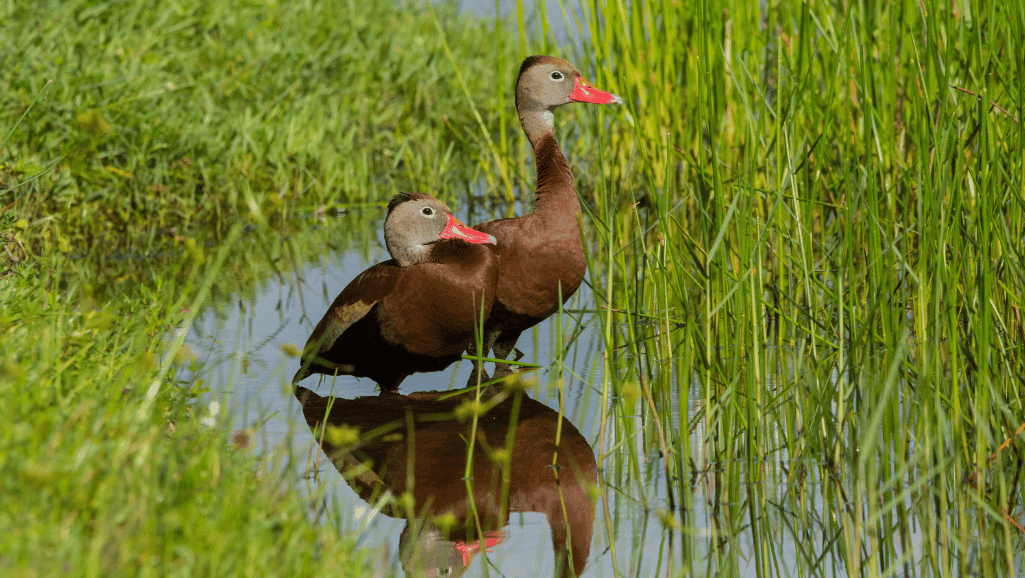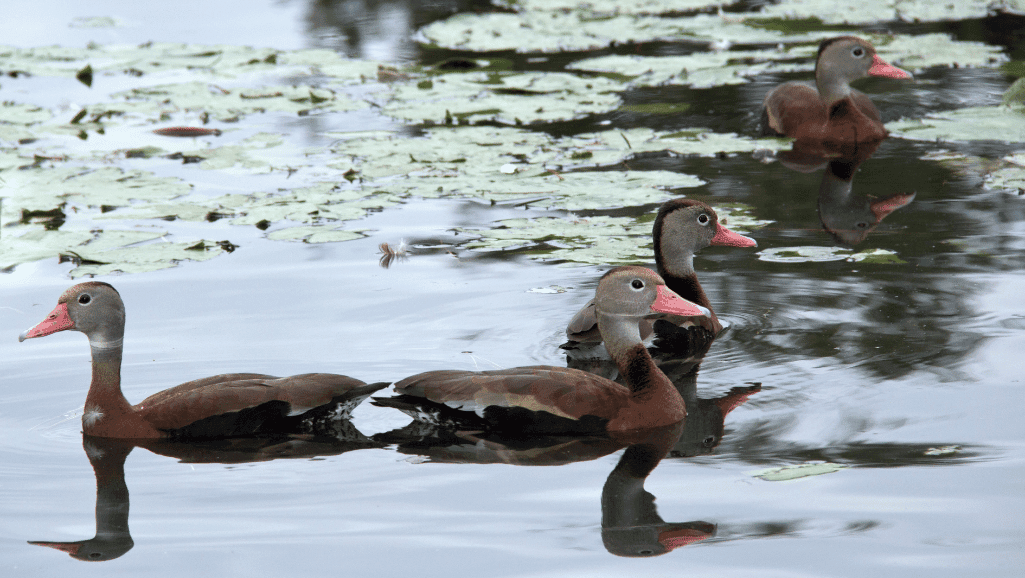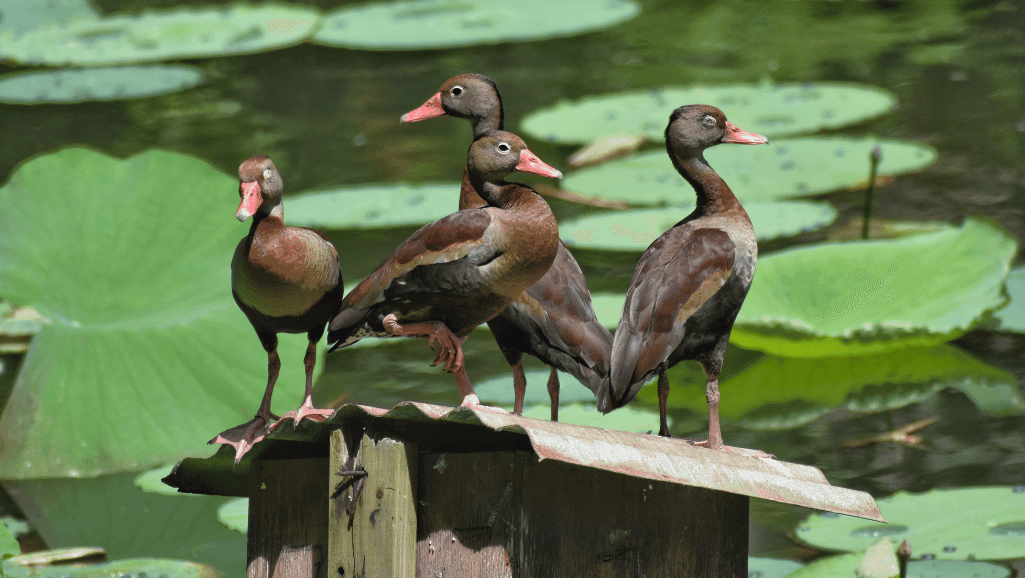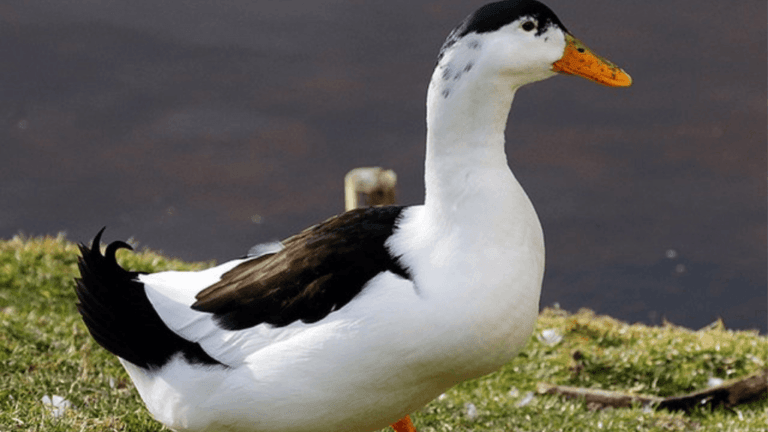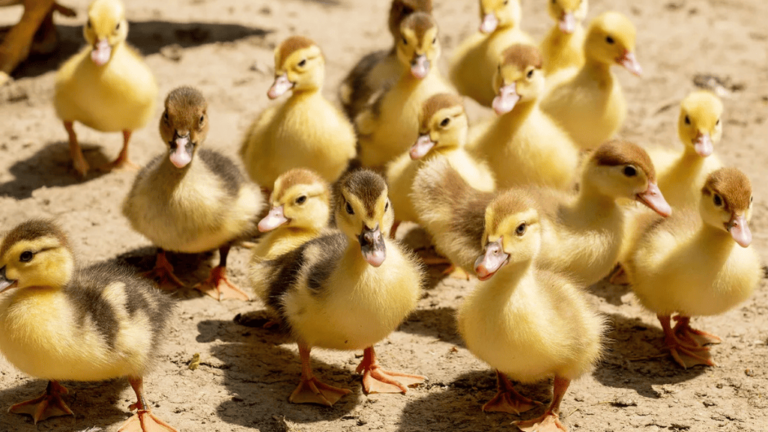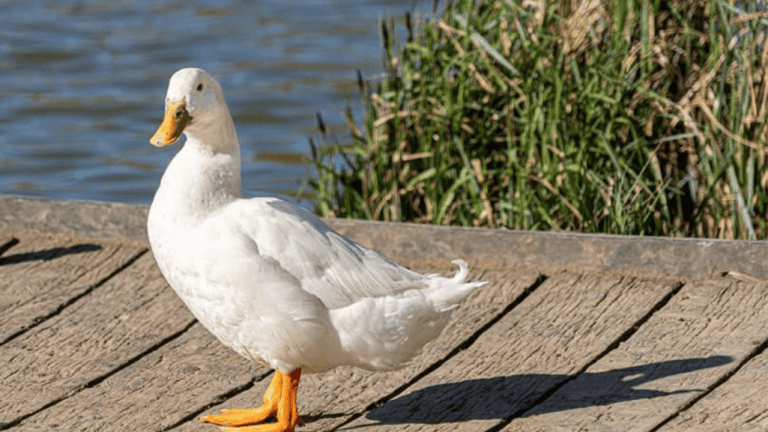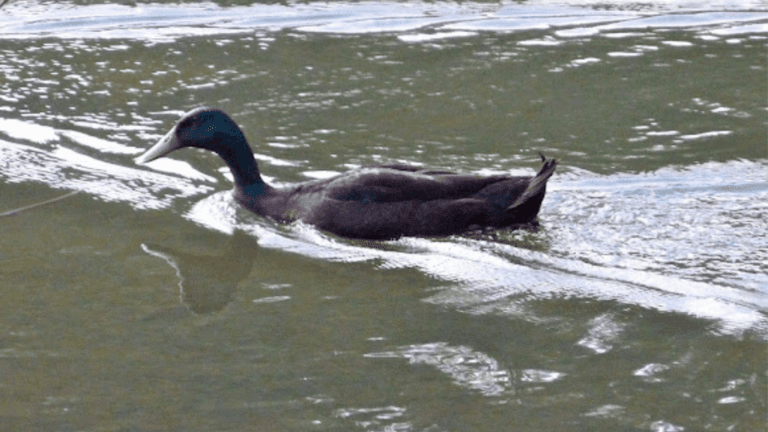The Black Bellied Whistling Duck, known as Dendrocygna autumnalis, is a standout in the waterfowl family. It has a chestnut body, black belly, and a bright pink bill. This bird is making headlines for moving north from its usual spots in the southern U.S. and Latin America.
These birds are 19-22 inches long and have a wingspan of 30-37 inches. They’re bigger than the Fulvous Whistling-Duck but smaller than a goose. You can find them in shallow ponds, golf courses, and even city parks because they’re so adaptable.
Key Takeaways
- Black Bellied Whistling Ducks have a unique appearance with chestnut breast and black belly
- They measure 19-22 inches in length with a 30-37 inch wingspan
- These waterfowl are expanding their range northward in the United States
- They adapt well to human-altered environments, including parks and golf courses
- The global population is estimated at 1.1-2 million birds and is increasing
- Black Bellied Whistling Ducks are protected under the Migratory Bird Treaty Act
Introduction to the Black Bellied Whistling Duck
The Black Bellied Whistling Duck is a standout among its peers. It’s known for its unique look and how well it fits into different environments. Bird lovers are drawn to its distinct features and how it adapts to various habitats.
Distinctive Features and Appearance
These ducks have a striking look. They have long necks and legs, similar to geese. Their chestnut breast and black belly stand out. The grayish face, bright pink bill, and legs make them easy to spot among other ducks.
Habitat and Distribution
These adaptable birds live in many places. You can find them in shallow ponds, golf courses, city parks, and fields. They’re common in Texas, Louisiana, and other southern states. Their numbers are growing, especially in Texas, as noted in the All About Birds guide.
Taxonomic Classification
Black Bellied Whistling Ducks are part of the Dendrocygna genus. They act more like geese and swans than regular ducks when it comes to behavior and forming pairs. This makes them unique among waterfowl.
| Characteristic | Black Bellied Whistling Duck | Mexican Whistling Duck |
|---|---|---|
| Average Clutch Size | 15.4 eggs | 12 eggs |
| Breeding Age | First year of life | First year of life |
| Nest Success Rate | 45% | Data unavailable |
| Breeding Population | Several thousand in Texas | 20,000 in Louisiana and Texas |
Physical Characteristics of the Black Bellied Whistling Duck
The Black Bellied Whistling Duck, also known as the red-billed whistler, stands out with its unique look. It has a chestnut body, black belly, and gray face. Its bright red bill and long pink legs make it easy to spot.
This duck is known for its long legs. When it flies, its legs stick out beyond its tail, making it look different. The white stripe on its wing is also noticeable when it rests and becomes more visible when it flies.
Adult Black Bellied Whistling Ducks are 47 to 56 cm long and have a wingspan of 76 to 94 cm. They weigh between 652 to 1,020 g. These sizes help them look strong and fly well.
Juvenile ducks look different from adults. They don’t have a black belly and have browner feathers. Their bills are black, and their legs are pale. As they get older, they start to look more like adults.
There are two types of Black Bellied Whistling Ducks: D. a. fulgens and D. a. autumnalis. The first type is found from southeast Texas to Panama. The second type ranges from Panama to Ecuador and northern Argentina. Subtle differences in plumage help tell these types apart, adding to the species’ variety.
| Feature | Adult | Juvenile |
|---|---|---|
| Body Color | Chestnut with black belly | Browner overall |
| Bill Color | Bright red | Black |
| Leg Color | Pink | Pale |
| White Wing Stripe | Present | Present |
Behavior and Lifestyle
The Black-bellied Whistling Duck has behaviors that make it stand out. These gregarious waterfowl live unique lives. They have special ways of eating, socializing, and communicating.
Feeding Habits
Black-bellied Whistling Ducks feed at night. They go to fields after dark to find seeds and small bugs. Plants make up most of their diet, with insects and snails being less than 10%.
Social Structure
These ducks live in big groups all year. They are like geese and swans in how they live together. They form strong pairs that work together to raise their young.
Vocalizations and Communication
The Black-bellied Whistling Duck makes a high-pitched whistle. This sound is key to how they talk to each other. It helps them find their way between places they visit.
| Characteristic | Details |
|---|---|
| Weight | 19-34 oz |
| Length | 18.5-20.1 inches |
| Wingspan | 33-37 inches |
| Lifespan (Wild) | 6-8 years |
| Lifespan (Captivity) | 10+ years |
Habitat Preferences and Adaptation
Black-bellied whistling ducks are very adaptable in where they live. They can be found in many places, from wild areas to places changed by humans. This adaptability has helped them spread out more in the southeastern United States.
Natural Habitats
In their natural homes, black-bellied whistling ducks like the edges of shallow ponds and wetlands. These spots are perfect for finding food and making nests. Their choice of these places is because of how they eat and breed.
Adaptation to Human-altered Environments
These ducks have also adapted well to city life. They can be seen in city parks, golf courses, and even schoolyards. This ability to adapt has helped their numbers grow and spread out more.
One big way they’ve adapted is by using flooded rice fields. These fields have lots of food and good places to nest. The ducks’ skill at living in these areas has helped them make homes across the southeastern United States.
| Habitat Type | Characteristics | Benefits for Ducks |
|---|---|---|
| Shallow Ponds | Natural, calm waters | Ideal for feeding and nesting |
| Flooded Rice Fields | Agricultural, abundant food | Ample food supply, nesting sites |
| Urban Parks | Human-made, protected areas | Safe spaces, diverse food sources |
The black-bellied whistling ducks are also good at making nests in man-made places. They use nest boxes, which has helped their numbers grow in places like Texas and eastern Mexico. Their success in different places shows how important it is to have different kinds of landscapes for waterfowl. Waterfowl experts are always studying these birds to learn more about their lives and what they need.
Breeding and Reproduction
Black-bellied Whistling-Ducks are fascinating tree-nesting ducks with unique breeding habits. They breed from late March to October, sometimes into November. These birds like to nest in cavities, often in large tree holes or nest boxes.
Their reproductive process is quite interesting. They lay 12-16 eggs, sometimes up to 22 in one nest. The eggs take 25-30 days to hatch, and the young ducks leave the nest after 10-13 days. These ducks form lifelong pairs, which is rare among waterfowl.
Studies have looked into nest success and breeding habits. In Louisiana, about 36.7% of nests hatched successfully, 27.2% were abandoned, and 35.6% were predated. Brood parasitism, where one duck lays eggs in another’s nest, is common. Despite this, their numbers have been growing by about 6% a year from 1966 to 2019 in the southern U.S.
Conservation efforts, like providing nest boxes, have helped these ducks breed better. With around 1 million breeding birds worldwide and a low conservation concern, their future looks good.


